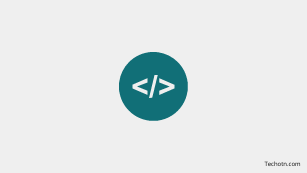How To Build a Financial App – Financial applications are software that makes it easier to manage financial business processes. They are applications or programs you download to your mobile device to do a specific financial job.
With new developments, there is an app for everything, whether you want to keep track of your monthly spending, rapidly send money to a kid or grandchild, or double-check your most recent bank account balance.
There are financial applications available for practically every element of your personal finances, including budgeting, debt reduction, investing, and more. These include apps that can help you save more money. They will help you learn more about how to create a budget app.
Planning and controlling personal financial activities, including income creation, spending, saving, investing, and protection, fall under personal finance.
A budget or financial plan can serve as a summary of managing one’s finances. Most personal finance comprises income, spending, saving, investing, and protection. If you want to make a budget app, a budget or financial plan will significantly help.
Types of Financial Applications
Technology and innovation have previously been combined in the financial sector to meet business needs and give clients a fun experience while dealing with challenging money management duties. There are different types of financial application software,
each of which aims to accomplish a specific objective of the economic organization or its users. To know how to build a financial app, you need to know the different types of financial applications. Click the link above for a similar experience with Topflight Apps.
1. Payment Gateways
ECommerce websites employ these to enable users to conveniently pay for their purchases with debit or credit cards through MasterPass or LiqPay gateways, or PayPal, for instance, if the eCommerce website has a corresponding gateway.
2. Budgeting Applications
They are well-known financial tools typically linked directly to a user’s bank account. In this instance, budgeting applications function following the open banking methodology, in which a bank shares users’ transactions with an app in exchange for the user receiving a statistical analysis of his spending. It will give you more insight into how to create a budget app.
3. Online Banking Applications
They are well-liked solutions developed by banks to improve client experiences and free up the bank’s support staff. These apps typically let users track their expenditures, request loans, register for accounts, and make payments.
Other types of financial applications include:
· Financial forecasting app.
· Bookkeeping software.
· Tax management software.
· Peer-to-peer (P2P) lending and investing software.
Read – Flutter Developer – All Important Things You Need To Know
How to create a budget app
If you want to know how to build a financial app, there are essential steps that you need to consider. They are:
1. Know your audience
To develop a budget app, knowing your audience properly makes a variety of things more accessible, like coming up with a superior product, establishing the feature set, and developing a clever and successful marketing strategy.
To create a user persona, conduct research and provide critical demographic parameters.
2. Ensure security
When you build a budget app, you should enhance security to safeguard user data. You can do this by using two-factor authentication, limiting the session mode to a certain period to prevent the application from operating without protection, and making sure to display personal information carefully.
Features to include in a financial app
Account authorization: You should make this quick and straightforward, but keep in mind that it needs to be secure because you deal with sensitive data.
User profiles: With this, users can enter and edit general information about themselves.
Income and expense tracking: It gives users rapid access to all transactions, controls over them, and period-specific filtering.
Categorization: Users must categorize their spending to understand better and manage their budgets.
Goal-setting: Encourage people to participate in challenges and establish objectives for themselves, such as saving $100 each week.
Linking to bank accounts: By connecting the app to other financial services, customers will have access to synchronization, and some operations will be automated.
Other important aspects to take note of to create your own budget app
Read: How To Backup Your Photos With Unlimited Free Storage
Choose the tech tool.
Decide on the tools and technologies you’ll be using to construct the app once you have a list of features and an overall vision for it. Libraries, programming languages, frameworks, and other tools and resources will be included.
Design a practical UX interface.
Personal finance software should make managing your money simple. Consider the user flow and screen switching. To avoid overwhelming consumers, only display what is essential at one time.
Test and Launch
Launch your finance app once everything has been reviewed and updated. Remember that launching involves more than just placing the goods on store shelves. The performance of the application is successful because of a marketing plan.
Tech-Enthusiast and Founder/Author of Techotn.com and also a passionate Pinterest Marketer at Sajalmanjhi.com. Follow me on X twitter.com/ManjhiSajal
